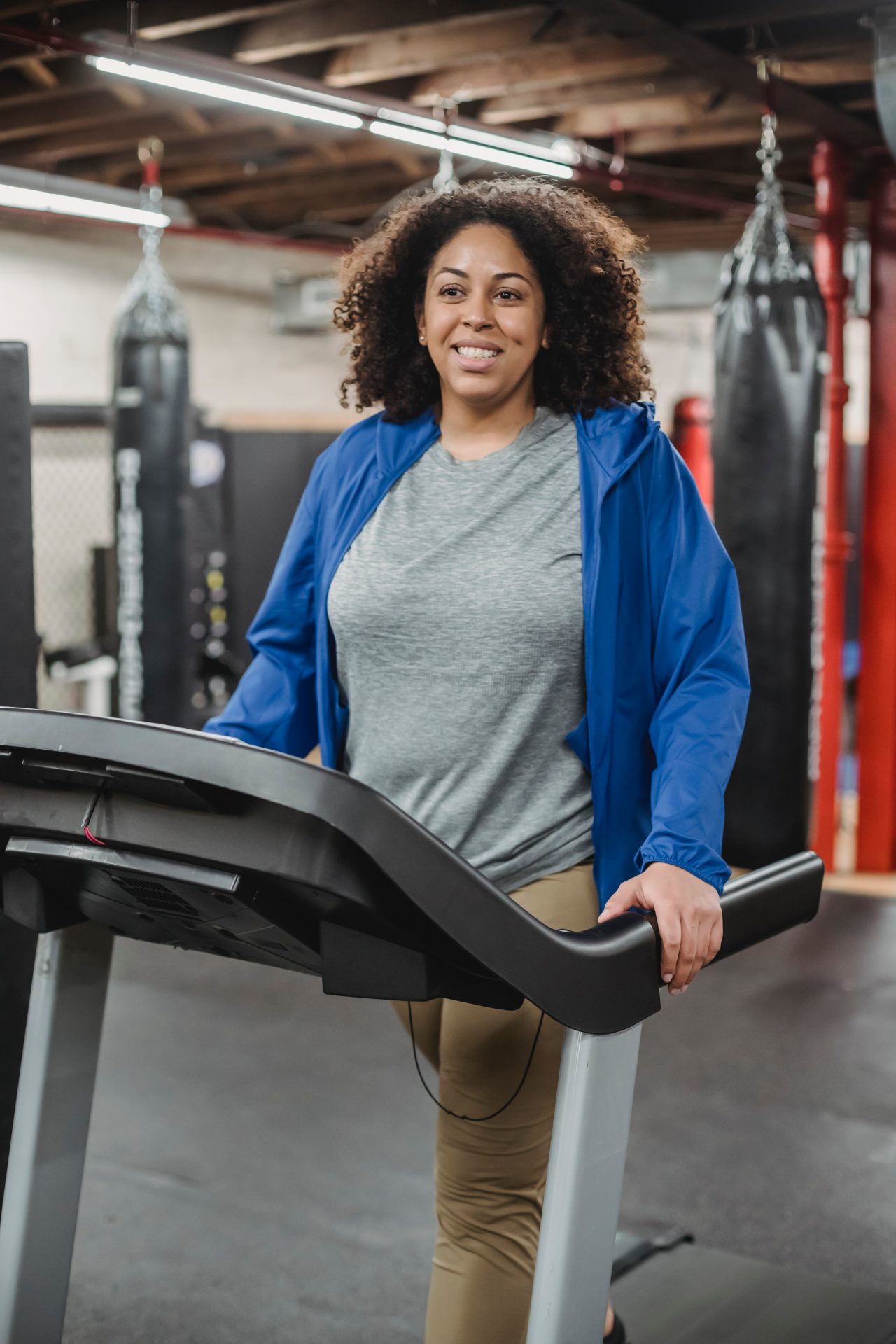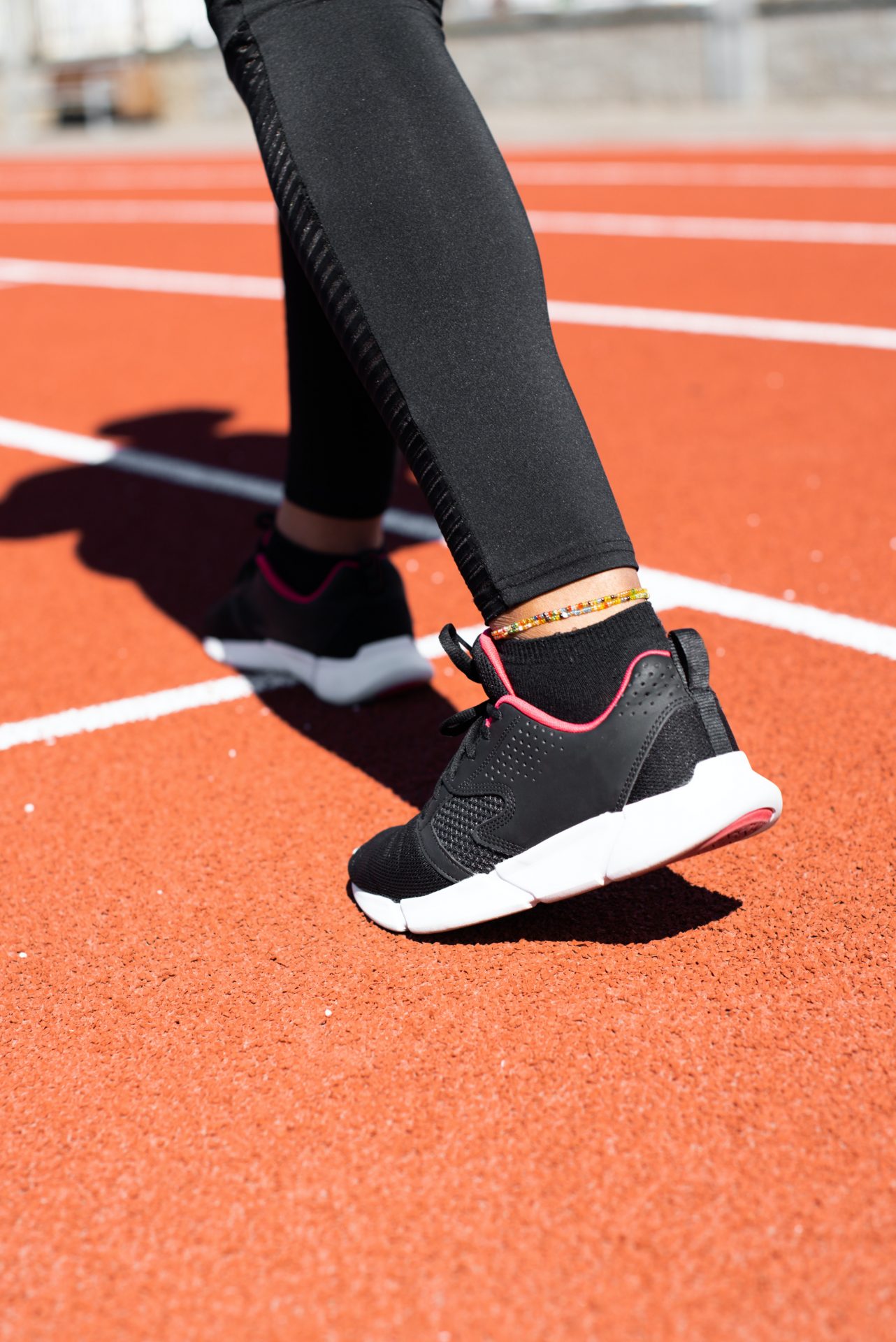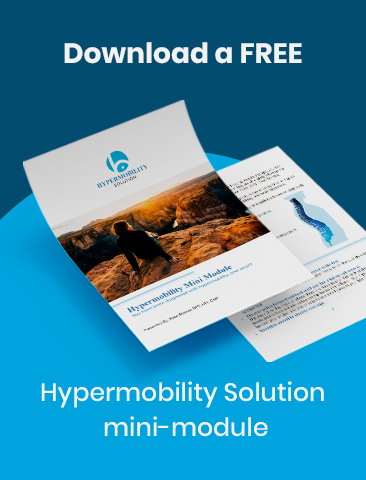Walking with hypermobility is often something that we pay little attention to. When it’s easy for our bodies to do, we take for granted how natural it comes to most of us. But, when it comes to hypermobility, the way that we walk is extremely important. The way that we walk is significantly related to hip pain, knee pain, bursitis, and tendonitis.
Read on to learn more about how to analyze and adjust your walking gait in order to avoid symptoms when walking with hypermobility.
- Review your walk
- Start with your feet
- Pay attention to the direction of your knees
- Bend at the hip – not your back
- Use your core
- Pay attention to your arms
- Stand up straight and tall
- My top walking tips
Review your walk
Walking is hard to assess yourself. If you can have a physical therapist review your walking with you, also known as your gait, please take advantage of it.
If possible, record yourself walking or use a full-length mirror to get feedback on how you move.
When you’re able to watch yourself and dissect your movements, you’ll have a greater understanding of what is working, and what isn’t.
Being able to have the visual insight will be particularly helpful when correcting your gait.
Start with your feet
When analyzing your walk, make sure your feet are facing and moving forward, not turning in or out to the side.
They should be symmetrical. Meaning one foot should not be at 3 o’clock while the other is at 12 o’clock.
However, there is an acceptable range where your left foot should be between 11 and 12 o’clock, and your right foot should be between 12 and 1 o’clock.
There are many excuses that people give, including: “I am duck-footed” or “I have always done this.” These do not apply.
You may have regularly done that in the past, or your whole life, but that doesn’t make it right. Try and correct as much as possible. Try to keep the weight in the center of your foot.
When walking, you should land close to the center of the heel and then move forward along the center of your foot, pushing off between the first and second toes.
One easy way to get insight into the way that you’re moving is by checking the wear pattern on the bottom of your shoes. This will give you an accurate evaluation of what you are doing.
For instance, if you are pushing off along the inside of the ball of your foot or landing along the outside of your heel, this is a good clue that you are not using your foot correctly.
It can create foot pain, plantar fasciitis, knee pain, and hip pain. It is hard to pay attention to it, but keep checking it.
Pay attention to the direction of your knees
Walking with hypermobility often can cause your knees to try to turn in towards one another.
This can stem from hip weakness or just poor control. And, not only does this contribute to knee pain, but it can also cause feelings of your knee wanting to give out.
You want to straighten out your legs by squeezing your glutes or your butt muscles, NOT rolling out on your feet.

Bend at the hip – not your back
Make sure you are lifting your leg with your hip and not your back. To do this, think about picking up your knee, and it will cause your hip to flex, as opposed to originating the movement from your back.
This means don’t bend and try to move with your back. If you think about walking, you think about moving your legs.

Use your core
Watch yourself walk into a mirror and notice do your shoulders stay the same height? If you have one shoulder that drops down below, or if your belly button moves side to side, you have too much-wasted movement with your trunk.
Walking with hypermobility is different – you will want to think about pulling your belly button in toward your spine and keeping your posture tall.
Think about using your abdominal muscles. Try to engage them to about 50%.
Use them enough to be able to hold and control your position, but not so much that you are not able to breathe.
Next step is keeping your trunk upright and moving with your legs.
Starting to become aware of your trunk movement and position is helpful as we try to change our gait.
Pay attention to your arms
When walking with hypermobility, allow your arms to swing comfortably. Be sure to lead with your thumbs forward; they should move equally on both sides but also naturally. Don’t try to force the movement.

Stand up straight and tall
Walking with hypermobility, always think about standing tall like you have a string lifting up on the top of your head.
This keeps you from inadvertently extending backward or leaning forward. It is always about going up.
Now form this position, lean slightly forward from your hips to allow gravity to help pull you forward. This will enable you to benefit from gravity rather than working against it.
Allowing your weight to fall forward makes moving easier. Then you can work on keeping your legs underneath you while you walk.
So often, when people are afraid of falling, they start to lean their bodies back. They also tend to think that standing straight up means pulling their shoulders behind them.
Instead, try to use the same cues that we use for standing posture. Only this time, all you’re adding is movement.
Also, keep in mind that it is a lot easier to step forward if you lose your balance than backward, making it safer as well.
Try it on your own. Walk slightly leaning back and feel how much pressure it puts on your lower back and knees.
Now try leaning slightly forward, just enough so that it causes you to have to take a step and then continue walking. Feel how much easier that is on your body.
My top walking tips
When walking with hypermobility, be sure to analyze what you’re doing right, and what you’re doing wrong. You can do this by assessing yourself in a mirror, checking the wear patterns on your shoes, and being mindful of the directions your feet, knees, and arms are headed.
By implementing these techniques and being mindful of your gait, you’ll decrease your hypermobility symptoms and be able to move more safely, ideally decreasing the chance of falling and injuries.
Looking for an online support team? Join the Hypermobility Solution Facebook Group here!

About Kate

Kate Skinner is a Doctor in Physical Therapy, co-founder of Great Divide Physical Therapy, and creator of Hypermobility Solution.
Recent Posts


